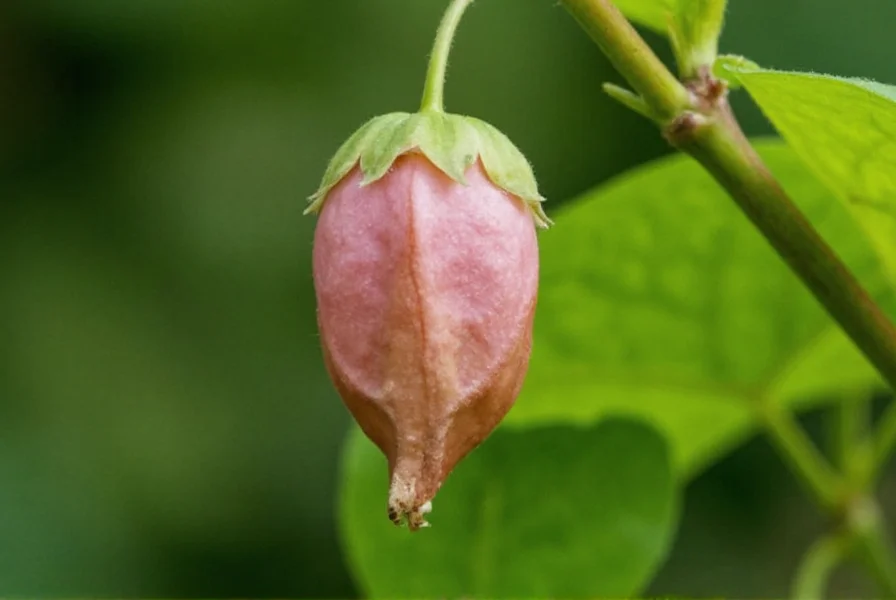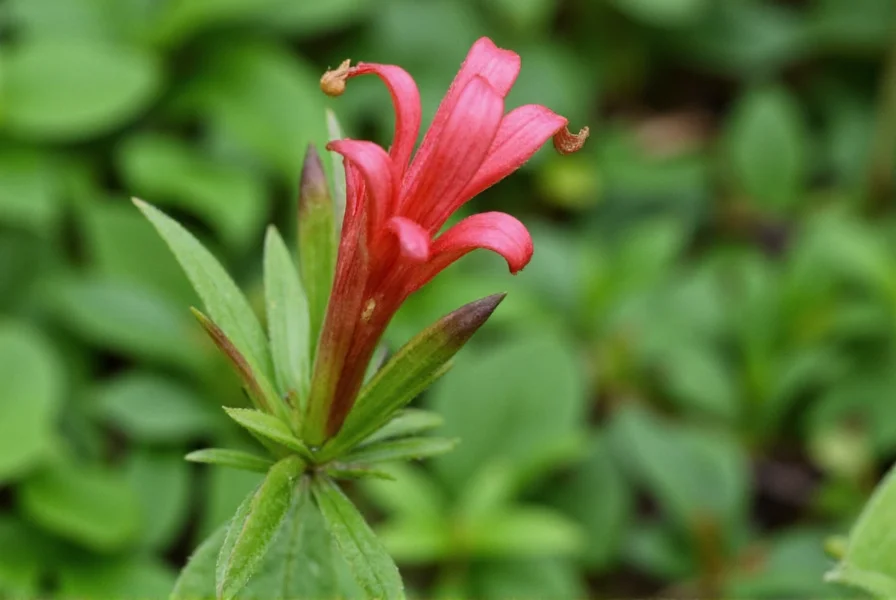The wild ginger flower represents a fascinating botanical subject for nature enthusiasts, gardeners, and foragers seeking accurate identification information. Understanding these distinctive plants requires examining their physical characteristics, habitat preferences, and important safety considerations.
Botanical Characteristics of Wild Ginger Flowers
Wild ginger (Asarum species) produces one of spring's most unusual blooms. The wild ginger flower identification process begins with recognizing its distinctive features:
- Color and shape: Maroon to purple-brown, jug- or bell-shaped flowers measuring 1-2 inches long
- Position: Flowers grow close to the ground, often partially hidden by leaf litter
- Blooming period: Early spring (March-May depending on region), before full leaf development
- Petals: Three lobed petals forming a distinctive collar-like structure
- Scent: Some species emit a faint, earthy aroma that attracts pollinating insects

Habitat and Growing Conditions
Understanding wild ginger growing conditions helps locate these plants in their natural environment:
| Habitat Feature | Wild Ginger Preference |
|---|---|
| Light Requirements | Full to partial shade (typically found in deciduous forests) |
| Soil Type | Moist, well-drained, humus-rich soil |
| Geographic Range | Eastern North America (Asarum canadense), Pacific Northwest (Asarum caudatum) |
| Hardiness Zones | USDA zones 4-8 |
These perennial plants form dense colonies through rhizomes, creating attractive ground cover in woodland settings. The wild ginger flower blooming season coincides with other spring ephemerals, making forest floors particularly vibrant during this period.
Common Wild Ginger Species
Several native wild ginger species exist across North America:
- Asarum canadense (Canadian wild ginger): Most common in eastern forests, with kidney-shaped leaves and distinctive maroon flowers
- Asarum caudatum (Western wild ginger): Found in Pacific Northwest forests, featuring longer-tailed flower lobes
- Hexastylis species (Carolina wild gingers): Southeastern US varieties with similar growth habits
Safety Considerations and Look-Alikes
Proper wild ginger look-alikes to avoid is crucial for safety. While the plant's rhizomes emit a ginger-like aroma when crushed, wild ginger contains aristolochic acids, which are nephrotoxic and carcinogenic.
Key safety points:
- Wild ginger is not safe for consumption despite its name and scent
- Never confuse with true culinary ginger (Zingiber officinale), which belongs to a completely different plant family
- Avoid confusion with birthroot (Trillium species), which has three-petaled white flowers
- Do not mistake for mayapple (Podophyllum peltatum), which has large umbrella-like leaves
Ecological Importance
Wild ginger plays several vital roles in forest ecosystems:
- Serves as host plant for the pipevine swallowtail butterfly in some regions
- Provides early spring nectar source for emerging insects
- Forms protective ground cover that prevents soil erosion
- Contributes to forest floor biodiversity through its extensive rhizome network
Cultural and Historical Context
Despite its toxicity, wild ginger medicinal uses appear in some historical records. Native American tribes occasionally used small amounts externally for medicinal purposes, but internal use was rare due to recognized toxicity.
Early European settlers sometimes used the rhizomes as a ginger substitute in cooking, unaware of the potential health risks. Modern research confirms that is wild ginger flower edible is a question with a definitive "no" answer for safe consumption.
Observing Wild Ginger Responsibly
Nature enthusiasts can enjoy wild ginger through observation rather than collection:
- Photograph plants in their natural habitat without disturbing them
- Learn to identify by visual characteristics rather than scent or taste
- Respect protected areas where wild ginger may be conserved
- Consider cultivating non-toxic native alternatives in home gardens
Understanding the differences between wild ginger vs cultivated ginger prevents dangerous confusion. True culinary ginger requires tropical conditions and belongs to the Zingiberaceae family, while wild ginger thrives in temperate forests as part of the Aristolochiaceae family.
Frequently Asked Questions
Is wild ginger flower safe to eat?
No, wild ginger flowers and all parts of the plant contain aristolochic acids, which are toxic compounds known to cause kidney damage and increase cancer risk. Despite the ginger-like aroma, wild ginger is not safe for consumption.
How can I identify wild ginger flowers in the forest?
Look for maroon-brown, jug-shaped flowers growing close to the ground in deciduous forests during early spring. The flowers typically appear before the heart-shaped leaves fully develop. The distinctive three-lobed petals and earthy scent (when gently crushed) help with wild ginger flower identification.
What's the difference between wild ginger and culinary ginger?
Wild ginger (Asarum species) belongs to the birthwort family (Aristolochiaceae) and grows as a forest floor perennial in temperate regions. Culinary ginger (Zingiber officinale) belongs to the ginger family (Zingiberaceae), requires tropical conditions, and produces the edible rhizomes used in cooking. The plants are unrelated despite the similar scent.
When does wild ginger flower bloom?
Wild ginger flowers typically bloom in early spring, from March to May depending on the region and climate. The flowers emerge before the large heart-shaped leaves fully develop, making them somewhat difficult to spot among forest floor debris during their wild ginger flower blooming season.
Can I grow wild ginger in my garden?
Yes, wild ginger makes an excellent native ground cover for shaded garden areas. Plant rhizomes in moist, well-drained soil with plenty of organic matter. It spreads slowly through rhizomes to form attractive colonies. Remember that while it's safe to grow, is wild ginger flower edible remains a question with a negative answer for all parts of the plant.











 浙公网安备
33010002000092号
浙公网安备
33010002000092号 浙B2-20120091-4
浙B2-20120091-4